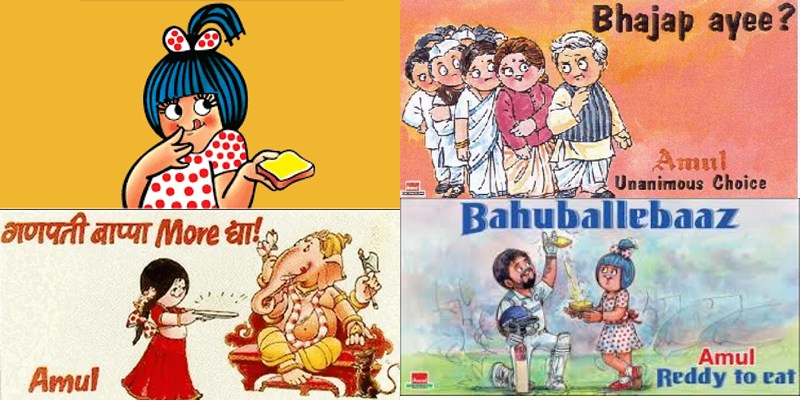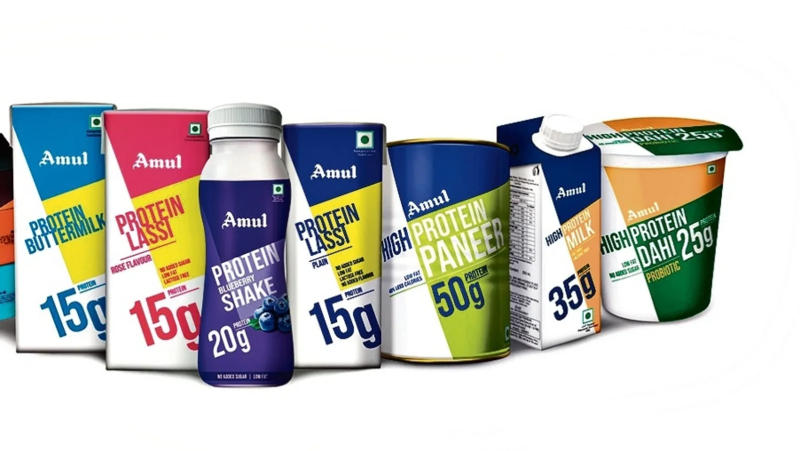
We all know Amul, don’t we? For decades, the brand’s ‘Utterly Butterly Delicious’ jingle and the charming Amul girl have been a constant, comforting presence in Indian households. It’s the taste of our childhood, the dependable dairy in our fridge. But something has shifted. Look closely at the latest products and promotions and you’ll see a distinct change in focus. This isn’t your old Amul; this is the new, protein-rich Amul and it’s here to stay.
This is a story not of a brand reinventing itself from scratch, but of one cleverly evolving its existing identity to meet the modern consumer. It’s a masterclass in marketing strategy, showing how a heritage brand can stay relevant and even disruptive. For any digital marketing agency , it’s a case study in balancing legacy with innovation. So, grab a cup of coffee (or maybe an Amul protein shake!) and see how this iconic Indian brand is flexing its muscles in the wellness market.
Table of Contents:
- The Legacy of Amul
- The Strategic Shift Of Amul
- The Winning Results From Byproduct
- The Digital Savvy Approach
- Concluding Thoughts…
- Frequently Asked Questions
The Legacy of Amul

Before its pivot to high-protein products, Amul’s marketing was a masterclass in brand building that etched itself into the fabric of Indian culture. For decades, the strategy wasn’t about pushing individual products with heavy, costly campaigns. Instead, it was an umbrella branding approach, where the “Amul” name and the powerful brand equity attached to it, did the heavy lifting. The company famously spent less than 1% of its revenue on advertising, yet its message resonated everywhere.
The cornerstone of this approach was the iconic Amul girl, created by the advertising agency Advertising and Sales Promotion (ASP) in 1966. She was the mischievous, polka-dotted face of the brand, offering witty, timely commentary on everything from politics to cricket. Her ads, primarily featured on billboards and in newspapers, became a national institution, a source of lighthearted relief in a busy world.
Alongside the ever-present Amul girl, the company leaned heavily on an emotional connection with its audience. The jingle, “Amul Doodh Peeta Hai India” (India drinks Amul milk) was a rallying cry that linked the brand to national health and pride. This, combined with a reputation for consistent quality and affordable prices, cemented Amul’s position as the trusted, utterly butterly delicious “Taste of India”.
Amul’s marketing was about slow-burn nostalgia, not hard-sell tactics. For years, the focus was on core, low-cost dairy products like milk, butter and cheese, positioning them as daily essentials for the average middle-class family. This created a deep, unwavering loyalty that formed the perfect foundation for the next chapter of its journey, setting the stage for the strategic, protein-focused shift to come.
The Strategic Shift Of Amul

This move wasn’t a sudden whim but a brilliantly calculated pivot driven by market intelligence.
A few key factors explain the shift:
A new generation of consumers: A large and growing segment of India’s population, particularly the youth aged 18–40, is becoming increasingly health-conscious. They’re frequenting gyms, following wellness influencers and paying close attention to their nutritional intake. Amul realised that to capture this audience, it needed to offer products that aligned with their aspirations.

Democratising protein:For a long time, protein supplements were the domain of dedicated athletes and bodybuilders, perceived as expensive and niche. Amul’s stroke of genius was to see the potential in democratising protein, making it a regular part of everyone’s diet. The goal was to transform protein from a performance-enhancing supplement into an everyday nutritional essential.
An untapped resource: Amul processes millions of litres of milk daily and whey is a natural byproduct of its paneer and cheese production. The brand cleverly identified that this underutilised whey could be turned into a profitable line of high-protein, value-added products. This gives them a massive cost advantage over competitors who have to source whey externally.
The Winning Results From Byproducts
The results of this strategic pivot have been remarkable. Rather than competing directly with premium fitness brands, Amul has redefined the market by making functional food accessible and mainstream. The strategy works for a number of reasons:
Tapping into existing trust: Amul already holds massive brand trust with its consumers. This meant it didn’t have to spend years building credibility for its new products. The trust was already there; it just needed to be extended to a new product category.
Inclusivity over exclusivity: While other brands market luxury and high performance, Amul markets wellness for all. They’re telling consumers, “You don’t need to change your entire lifestyle; just choose better products from the brand you already love.” This is a powerful emotional proposition that resonates with a far wider audience.
Unbeatable distribution: Amul’s extensive distribution network, with millions of retail outlets, is a formidable competitive advantage. You can find an Amul protein drink or high-protein paneer in a small town far sooner than you’ll find a niche, international protein brand.
The Digital Savvy Approach:

While the old Amul relied heavily on its iconic print and television campaigns, the new Amul is winning the game in the digital sphere, albeit with the help of traditional partners. While the advertising is still crafted by the long-serving branding agency daCunha Communications, the rollout is executed by a smart digital marketing agency that understands the modern media landscape.
On social media platforms, Amul pushes high-quality images and video content specifically promoting its protein-rich offerings. The brand has shifted the conversation from a general love of dairy to the specific benefits of daily protein intake. The approach is less about broad, feel-good messaging and more about targeted, educational and visually driven content that highlights new launches like high-protein kulfi, lassi and coffee. The brand’s digital efforts are complemented by large-scale sponsorships of events like the IPL, which feature the new protein range prominently across digital and television screens, further embedding the protein message into the national consciousness. This 360-degree digital activation, with an emphasis on product-focused content and modern media formats, ensures Amul remains relevant and resonates with a new, health-conscious generation of consumers.
Concluding Thoughts…
Amul’s shift towards protein is more than just a new product line; it’s a profound strategic move. By leveraging its inherent strengths, an unmatched distribution network, a wealth of raw materials and decades of consumer trust, it has managed to disrupt a growing market. This evolution proves that even the most established of brands can successfully adapt and thrive by listening to its audience and staying ahead of the curve. Much like a world-class branding agency, Amul understands how to balance tradition with innovation. The Amul of today isn’t just about ‘The Taste of India’; it’s about building a healthier, stronger India, one delicious, protein-packed product at a time.



